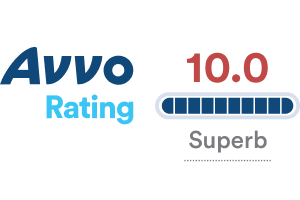Tax Issues in Bankruptcy and Insolvency Restructurings
- Preserving Net Operating Losses – Changes of Control Limitations and Bankruptcy Exceptions
- Cancellation of Debt Income – Insolvency and Bankruptcy Exceptions
- Worthless Debts and Securities
- Debt Modification as a Taxable Exchange
*All section references herein are to the Internal Revenue Code of 1986, as amended, unless otherwise noted.
To ensure compliance with requirements imposed by the IRS, we inform you that any U.S. federal tax advice contained in this document is not intended or written to be used, and cannot be used, for the purpose of (i) avoiding penalties under the Internal Revenue Code, or (ii) promoting, marketing, or recommending to another party any transaction or matter that is contained in this document.
I. Preserving Net Operating Loss Carryforwards – Changes of Control Limitations and Bankruptcy Exceptions
- Section 382(a) – general rule. The amount of the taxable income of any new loss corporation for any year following an “ownership change” which may be offset by pre-change losses (“NOLs”) shall not exceed the Section 382 limitation for such year.
- Section 382 Limitation. Subject to certain adjustments, the Section 382 Limitation is (A) the value of the old loss corporation (the value of the stock immediately before the ownership change – typically near zero in a bankruptcy context), multiplied by (B) the long-term tax-exempt rate (4.61% for May 2009). IRC Section 382(b).
- Ownership change. An ownership change occurs if immediately after the close of a testing date, the percentage of stock of the corporation owned by one or more 5-percent shareholders has increased by more than 50 percentage points over the lowest percentage of stock of such corporation owned by such shareholders at any time during the testing period (generally, the three-year period preceding the testing date). IRC Section 382(g).
- All stock owned by shareholders of a corporation who are not 5-percent shareholders of such corporation is generally treated as stock owned by one 5-percent shareholder of such corporation. IRC Section 382(g)(4)(A).
- Carryforwards disallowed if continuity of business requirements are not met. Generally, if the new loss corporation does not continue the business enterprise of the old loss corporation for two years, the Section 382 Limitation will be zero. IRC Section 382(c).
Example 1
If corporation L had $100 of loss carryovers and P acquired all of L’s stock for $50 (the value of L) at a time when the long-term tax-exempt rate was 10 percent, the amount of L ‘s post-change taxable income that could be offset by the pre-change carryovers would be limited to a $5 annual ceiling.
Example 2
Same as Example 1 above, except P acquires all of L ‘s stock for $200. The annual loss-utilization-limitation ceiling would be $20, and L could earn out its loss carryovers in five years, assuming L generated enough taxable income during these years. Thus, the higher the price that P paid for L, the more rapid the absorption of L’s carryovers and the more likely that P would obtain use of the full amount of these carryovers.
Bankruptcy Exceptions to the Section 382 Limitation
- Section 382(I)(5). The Section 382 Limitation shall not apply to any ownership change if
- the old loss corporation is (immediately before such ownership change) under the jurisdiction of the court in a title 11 or similar case (a receivership, foreclosure, or similar proceeding in a Federal or state court),
- the transaction resulting in the ownership change is ordered by the court or is pursuant to a plan approved by the court; and
- the shareholders and “old and cold” creditors of the old loss corporation (determined immediately before such ownership change) own (after such ownership change and as a result of being shareholders or creditors immediately before such change) 50 percent or more of the vote and value of the stock of the new loss corporation (or stock of a controlling corporation if also in bankruptcy).
- “Old and cold” creditors. Subject to certain exceptions, these are the beneficial owners (determined without applying attribution rules), immediately before the ownership change, of “qualified indebtedness” of the loss corporation.
Such a creditor is treated as owning stock of the new loss corporation (or a controlling corporation) only to the extent that it receives stock in full or partial satisfaction of qualified indebtedness (in a transaction that is ordered by the court or is pursuant to a court approved plan). Treas. Reg. Section 1.382-9(d)(1). - Qualified indebtedness. Indebtedness of the loss corporation that
- was owned by the same beneficial owner for 18 months prior to the filing of the title 11 or similar case; or
- arose in the ordinary course of the trade or business of the loss corporation and has been owned at all times by the same beneficial owner. IRC Section 382(l)(5)(E).
- If Section 382(l)(5) applies:
- The new loss corporation is not subject to a Section 382 Limitation on its use of NOLs.
- Instead, NOLs are recalculated as if no deduction was allowable for interest paid or accrued on debt which was converted into stock pursuant to the bankruptcy reorganization during the current and the three preceding tax years. IRC Section 382(l)(5)(B).
- The continuity of business requirement is not applicable (but Section 269 applies, as discussed below).
- If there is a second ownership change within two years, the Section 382 Limitation will be zero. IRC Section 382(l)(5)(B).
- If Section 382(l)(5) does not apply to a bankruptcy reorganization (or its treatment is revoked by the debtor), the Section 382 Limitation will be calculated under Section 382(l)(6).
- Section 269 business continuity requirement. IRS takes the position that Section 269 (Acquisitions made to Evade or Avoid Income Tax) may apply if the bankrupt corporation does not carry on more than an insignificant amount of an active trade or business. (Assessment is made under different rules than, and without regard to, the continuity of business requirement and is not tied to the historic trade or business.) Treas. Reg. Section 1.269-3(d).
- Section 382(l)(6). Here, subject to myriad rules and exceptions, the value of the loss corporation is the lesser of
- The stock value of the loss corporation immediately after the ownership change (calculated to reflect any increase in value resulting from any surrender or cancellation of creditors’ claims in the transaction – cancellation of debt increases equity value); or
- The value of the loss corporation’s pre-change assets without regard to liabilities. Treas. Reg. Sections 1.382-9(j), 1.382-9(l).
- The Section 382 continuity of business requirement is applicable. If Section 382(l)(6) applies to increase the value of the old loss corporation, the continuity of business requirement is applicable. A violation sets the limit at zero. Treas. Reg. Section 1.382-9(m)(2).
- Second ownership change. If there is a second ownership change within two years, the rule under Section 382(l)(5) setting the Section 382 Limitation at zero does not apply.
Example
L is involved in a Title 11 proceeding. Under the court-approved plan, L ‘s creditor, C, acquires 100 percent of L’s stock; depending upon whether C qualifies as an historic (eighteen-month) creditor or an historic ordinary-course-of-business creditor, this event may or may not constitute an ownership change under Section 382.
- If C is not a qualified creditor, Section 382 is triggered, but the limitation would be measured pursuant to Section 382(l)(6); lesser of value of the loss corporation’s pre-change assets without regard to liabilities or the stock value of the loss corporation immediately after the ownership change.
- If enough creditors are qualified to meet the 50-percent-continuity line of Section 382(l)(5), the Section 382 limitation does not apply, but L must then reduce its carryovers by three years of interest deductions. Moreover, if another ownership change occurs within two years, L’s carryovers would be terminated under the one-bite rule of Section 382(l)(5)(D).
II. Cancellation of Debt Income – Insolvency and Bankruptcy Exceptions
- General Rule. Taxable income will arise from the retirement of debt at a discount (“COD” income). Kirby Lumber, Section 61(a)(12).
- Rationale. Borrowing does not result in taxable income at time of receipt; if repayment is subsequently cancelled or the obligation is diminished, the borrower obtains an economic benefit.
- When is COD income realized? COD income is generally realized when the debt is satisfied for less than its principal amount, or in the case of publicly traded bonds, at the time the bonds are purchased by the issuer at a discount. In the absence of an actual repayment or repurchase, the realization takes place when it becomes clear that the debt will not be repaid. Treas. Reg. Section 1.61-12.
- Amount of taxable income. Upon the discharge of debt at a discount, COD income is realized equal to the difference between the “adjusted issue price” of the discharged debt and the amount paid for its discharge. Treas. Reg. Section 1.61-12(c)(2)(ii).
- Related Parties. An acquisition of debt at a discount by a person related to the debtor works an immediate constructive discharge of the debt by virtue of Section 108(e)(4). “Related parties” include family members, a greater than 50% shareholder, two corporations in the same controlled group, and two entities under common ownership of at least 50%.
Example
P, a domestic corporation, owns 70 percent of the single class of stock of S, a domestic corporation. S has outstanding indebtedness that has an issue price of $10,000,000 and provides for monthly interest payments of $80,000 payable at the end of each month and a payment at maturity of $10,000,000. The indebtedness has a stated maturity date of December 31, 1994. On January 1, 1992, P purchases S’s indebtedness from I, an individual not related to S, for cash in the amount of $9,000,000. S repays the indebtedness in full at maturity.
- Under Section 61(a)(12) and Section 108(e)(4), S realizes $1,000,000 of income from discharge of indebtedness on January 1, 1992.
- Under Treas. Reg. Section 1.108-2(g)(1) the indebtedness is treated as issued to P on January 1, 1992, with an issue price of $9,000,000.
- Under Section 1273(a), the $1,000,000 excess of the stated redemption price at maturity of the indebtedness ($10,000,000) over its issue price ($9,000,000) is original issue discount, which is includible in gross income by P and deductible by S over the remaining term of the indebtedness under Sections 163(e) and 1272(a).
- Exceptions to COD Income.
- Section 108(a)(1)(A): title 11 cases
- Section 108(a)(1)(B): insolvency (but only to the extent thereof). “Insolvency” is defined as the excess of liabilities over the FMV of the assets.
- Section 108(e)(2): if repayment would have created a deduction (e.g. a trade account payable of a cash basis taxpayer is discharged).
- Section 108(e)(6): shareholder contributions of corporate debt to the borrower corporation creates COD to the extent the “adjusted issue price” of the debt exceeds the shareholder’s adjusted basis in such debt. In other words, the debt discharge rules apply to the extent that the amount of debt transferred to a corporation as a contribution to capital exceeds the shareholder’s basis in the debt.
- However, even though there is no COD income in title 11 and insolvency situations, Section 108(b) requires the borrower to reduce its tax attributes by the amount excluded from income.
- Attribute reduction where Section 108(a) applies.
- Generally, tax attributes are reduced in the following order: NOLs, carryover of general business credits, minimum tax credits, net capital loss, basis, passive activity loss or credits and foreign tax credits. Treas. Reg. Section 1.108-7(a)(1).
- The debtor takes into account for the year of discharge the tax attributes that are carryovers to that year before those attributes are reduced. Treas. Reg. Section 1.108-7(b).
- However, the taxpayer may instead elect to first reduce the basis of its depreciable property under Section 108(b)(5).
Example
In Year 4, X, a corporation in a title 11 case, is entitled under Section 108(a)(1)(A) to exclude from gross income $100,000 of COD income. For Year 4, X has gross income in the amount of $50,000. In each of Years 1 and 2, X had no taxable income or loss. In Year 3, X had a net operating loss of $100,000.
- X takes into account the net operating loss carryover from Year 3 in computing its taxable income for Year 4 before any portion of the COD income excluded under Section 108(a)(1)(A) is applied to reduce tax attributes. Thus, the amount of the net operating loss carryover that is reduced is $50,000.
III. Worthless Securities and Debts
- Creditors may be entitled to a deduction if they own “securities” or debts which become worthless during the taxable year. IRC Section 165(a)(Losses).
- The preliminary question is whether the instrument at issue is a “security.”
- Worthless Securities – general rule.
- If a “security” becomes worthless during the creditor’s taxable year, then the creditor may be entitled to a capital loss if the security is a “capital asset” or an ordinary loss if the security is not a “capital asset.” Treas. Reg. Section 1.165-5.
Worthless Securities – “Securities”
- For purposes of the worthless securities deduction, the term “security” means (1) corporate stock, (2) a right to subscribe for or receive corporate stock, and (3) a bond, debenture, note, or other evidence of indebtedness to pay a fixed or determinable sum of money, which has been issued with interest coupons or in registered form.” IRC Section
- 165(g)(2).
- The term “security” does not include loss on the worthlessness of a loan to an individual, partnership, trust, or estate. Look for a bad debt deduction under IRC Section 166 for such losses.
- The term “in registered form” has not been defined, but courts have given some guidance.
- The form of the instrument (not the intent of the parties) controls.
- Indicia of registration include whether the instrument: (i) is numbered and issued in the name of the creditor; (ii) certifies that the creditor is the owner; (iii) provides for interest payments; and (iv) recites that the issuer has caused the certificate to be signed by its duly authorized officers and to be sealed with the corporate seal.
- Courts have even held that an instrument is “in registered form” if it is recorded on the books of the debtor or transfer agent and provides on its face that it can only be transferred in this way.
Worthless Securities – “Worthlessness”
- No deduction is allowed unless the security is completely worthless.
- The basic test of worthlessness: (i) the security has no current liquidating value; and (ii) the security has no future value.
- No current value: the debtor’s liabilities exceed the value of its assets.
- No future value: may be established by (i) pointing to an identifiable event (e.g., bankruptcy, cessation of business, liquidation, etc.); or (ii) showing that liabilities are so greatly in excess of assets plus the nature of the assets and business are such that there is no reasonable hope that continuation will result in any profits for shareholder. Morton v. Commissioner, 38 B.T.A. 1270 (1938), aff’d, 112 F.2d 320 (7th Cir. 1940); Rev. Rul. 77-17, 1977-1 C.B. 44.
Worthless Debt – General Rule
- The worthless debt deduction may be available for debt instruments that do not meet the definition of “security” above.
- Note, if the debt instrument is a “security,” it cannot be deducted under the worthless debt rules. IRC Section 166(e).
- Depending on the circumstances, a deduction may even be available for debt that is only “partially worthless.” IRC Section 166(a)(2).
- However, the debt must be “bona fide” debt (i.e., arise from a debtor-creditor relationship based upon a valid and enforceable obligation to pay a fixed or determinable sum of money). Treas. Reg. Section 1.166-1(c).
Worthless Debt – Business vs. Nonbusiness Debt
- For non-corporate creditors, deductibility depends on whether the debt is business or nonbusiness debt (all debts owed to corporate creditors are “business debts”).
- Business debts: ordinary deduction
- Nonbusiness debts: short-term capital loss. IRC Section 166(d).
- Nonbusiness debt is any debt other than:
- Debt created or acquired by the creditor in connection with the creditor’s trade or business; or
- Debt the loss from the worthlessness of which was incurred during the operation of the creditor’s trade or business. IRC Section 166(d)(2).
- For this test, the debt must, at the time of the worthlessness, be “proximately related” to the creditor’s trade or business, as determined by the “dominant motivation” of the creditor. Treas. Reg. Section 1.166-5(b)(2).
Example
A, an individual who is engaged in the grocery business extends credit to B in 1955 on an open account:
- In 1956 A sells the business but retains the claim against B. The claim becomes worthless in A’s hands in 1957. A’s loss is not controlled by the nonbusiness debt provisions, since the original consideration has been advanced by A in his trade or business.
- In 1956 A sells the business to C but sells the claim against B to the taxpayer, D. The claim becomes worthless in D’s hands in 1957. During 1956 and 1957, D is not engaged in any trade or business. D’s loss is controlled by the nonbusiness debt provisions even though the original consideration has been advanced by A in his trade or business, since the debt has not been created or acquired in connection with a trade or business of D.
Worthless Debts – Worthlessness
- Unlike the rules for worthless securities, a deduction may be available for partially worthless debts (i.e., to the extent the IRS is satisfied the debt is “recoverable only in part”). IRC Section 166(a)(2).
- Business debts: partial deduction available
- Nonbusiness debts: no partial deduction available. Treas. Reg. Section 1.166-5(a)(2).
- Establishing Worthlessness: creditor must demonstrate that the debt had value at the beginning of the tax year and became worthless during that year. Factors to consider include:
- Subordinated status of the debt
- Insolvency of the debtor
- Decline in debtor’s business
- Debtor’s refusal to pay
- Abandonment of assets or businesses
- Decline in value of all property secured by the debt
- Ill health, death or disappearance of the principals
- Claims of prior creditors far in excess of the fair market value of all assets available for payment
- Bankruptcy or receivership
- Actions of the creditors in pursuing collection (i.e., whether a creditor unreasonably failed to take action then claimed a deduction)
- Overall business climate
- Debtor’s earning capacity
- Subsequent dealings between the creditor and debtor
- Debtor’s serious financial reserves
- Guarantees on the debt
- Lack of assets of the debtor
- Events of default (major or minor)
IV. Debt Modification as a Taxable Exchange
An exchange of property constitutes a taxable disposition if the property received differs “materially either in kind or extent” from the property given up (i.e., the new property is materially different from the old property). Treas. Reg. Section 1001-1(a). A change in terms of a debt instrument pursuant to a debt restructuring, or modification, produces an exchange if the new terms are materially different from the old terms. Treas. Reg. Section 1.1001-3.
Treasury Regulations
- Two-tier structure. An alteration to the terms of an instrument is first tested to determine if it constitutes a “modification.” If the alteration is a modification, the modification is then tested to determine whether it is a “significant modification.” A significant modification results in an exchange of the original debt instrument for the modified instrument for tax purposes. A modification that is not significant does not trigger an exchange. Treas. Reg. Section 1.1001-3(b).
- Modification. Any alteration of a legal right or obligation of the issuer or a holder of a debt instrument, whether the alteration is evidenced by an express agreement (oral or written), the conduct of the parties, or other means. Treas. Reg. Section 1.1001-3(c).
- Alteration by operation of original terms of debt instrument. An alteration that occurs by operation of the terms of a debt instrument is generally not a modification. For example, an annual resetting of the interest rate of a debt instrument based on the value of an index would not be a modification, nor would a specified increase in the interest rate that occurs under the terms of the instrument because the value of the collateral declines from a specified level. Treas. Reg. Section 1.1001-3(c)(1)(ii).
- Exceptions. Certain alterations are considered modifications even if they occur by operation of the instrument’s terms. These exceptions include:
- an alteration that results in the substitution of a new obligor,
- the addition or deletion of a co-obligor, or
- a change in the recourse (from recourse to nonrecourse or from nonrecourse to recourse) nature of the instrument constitutes a modification. Treas. Reg. Section 1.1001-3(c)(2)(i).
Example 1
The original terms of a bond provide that the interest rate is 9 percent. The terms also provide that if the issuer files an effective registration statement covering the bonds with the Securities and Exchange Commission, the interest rate will decrease to 8 percent. If the issuer registers the bond, the resulting decrease in the interest rate occurs by operation of the terms of the bond. Therefore, such a decrease in the interest rate is not a modification.
Example 2
Under the original terms of a bond issued by a corporation, an acquirer of substantially all of the corporation’s assets may assume the corporation’s obligations under the bond. Subsequently, the corporation’s assets are acquired by another corporation and the acquirer is the new obligor on the bond. The substitution of a new obligor is a modification, even though it occurs by operation of the terms of the bond.
- Significant Modifications. Generally, a modification is a significant modification, if based on all the facts and circumstances, the legal rights of obligations that are altered and the degree to which they are altered are economically significant. Treas. Reg. Section 1.1001-3(e)(1). Significant modifications include, but are not limited to, the following:
- A change in the annual yield by more than the greater of 1/4 of 1% (i.e., 25 basis points) or 5% of the annual yield of the unmodified instrument. Treas. Reg. Section 1.1001-1-3(e)(2).
- A change in the timing of payments if it results in the material deferral of scheduled payments. There is a safe-harbor period that begins on the date of the first scheduled payment is deferred and extends for a period equal to the lesser of five years or 50% of the original term of the instrument. Treas. Reg. Section 1.1001-1-3(e)(3).
- Significant Modifications.
- A substitution of a new obligor on a recourse debt instrument, except for certain transactions (i) described in Section 381(a) (liquidations of subs and tax-free reorgs), (ii) where the new obligor acquires substantially all of the assets of the original obligor, or (iii) where the debt is a tax-exempt obligation. Treas. Reg. Section 1.1001-1-3(e)(4)(i).
- The alteration of the collateral for, a guarantee on or other form of credit enhancement for, a recourse debt, if the modification results in a change in payment expectations. Treas. Reg. Section 1.1001-1-3(e)(4)(iv)(A).
- A substantial change in the collateral for, a guarantee on or other form of credit enhancement for, a nonrecourse debt instrument, subject to exceptions where the collateral is fungible or a similar commercially available credit enhancement contract is substituted. Treas. Reg. Section 1.1001-1-3(e)(4)(iv)(B).
- A change in the priority of a debt instrument relative to other debt of the issuer if it results in a change in payment expectations. Treas. Reg. Section 1.1001-1-3(e)(4)(v).
- A modification that changes a debt instrument into an instrument that is not debt for federal income tax purposes. Treas. Reg. Section 1.1001-1-3(e)(5)(i).
- A change from a recourse to a nonrecourse instrument or vice versa, subject to exceptions for certain tax exempt bonds and for a modification of a recourse debt instrument to a nonrecourse instrument where the instrument continues to be secured by the original collateral and the modification does not change payment expectations. Treas. Reg. Section 1.1001-1-3(e)(5)(ii).
- Change in Payment Expectations. A change in payment expectations occurs if, as a result of a transaction, (1) there is a substantial enhancement of the obligor’s capacity to meet the payment obligations under a debt instrument (and that capacity was primarily speculative prior to the modification and is adequate after the modification) or (2) there is a substantial impairment of the obligor’s capacity to meet the payment obligations under a debt instrument (and that capacity was adequate prior to the modification and is primarily speculative after the modification). Treas. Reg. Section 1.1001-1-3(e)(4)(vi).
Potential Consequences of a Taxable Exchange
- Holder of a debt instrument could recognize gain or loss on the exchange (depending on whether the exchange qualifies as a tax-free recapitalization).
- The debtor could be subject to COD income.
- Original issue discount (OID) can also arise on the exchange of old debt for new debt. Generally, OID is the excess of stated redemption price at maturity over issue price. OID is generally includible in taxable income by holders on a constant yield basis over the life of the debt, and is generally deductible by the issuer over the life of the instrument on the same basis as such OID is required to be taken into income by the holder.
Example
Corporation X has outstanding an issue of publicly traded notes, each of which has an issue price and face amount of $100. The public trading price of the notes is $90. X intends to exchange these notes for an issue of publicly traded notes, each of which will have a face amount of $95 and a public trading price (issue price) of $90. In addition to realizing $10 of discharge-of-indebtedness income on the exchange, the exchange will give rise to $5 of OID, deductible by X over the life of the new bonds.








